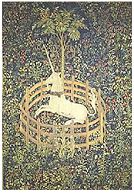

the archetypal mythology of horses
Copyright
2004-2022 Beverley Kane, MD
Page 13 of 20
selves are by definition unique and unlike any other. So the more we develop and
discover our personal truths and passions, the more we experience the isolation of setting
ourselves apart from our former selves and from others. The ultimate sacrifice in
personal growth is giving up a sense of belonging, even if it is belonging and being
beholden to a set of sanctioned behaviors that is not true to one's own nature. Yet
ironically the search for authenticity is the most unifying feature of existence. It is the
quest that restores the ultimate sense of belonging to and in an abundant, miraculous, and
benevolently evolving universe.
We project selflessness and altruism onto religious figures such as Mother
Theresa and other ascetic and celibate spiritual leaders and onto heroes such as the
firefighters who lost their lives in the World Trade Center. We project victimization on
abducted children, injured animals, and those who suffer from diseases, such as breast
cancer and AIDS, that have inspired various causes célèbres, postage stamps, and fun
runs. In the mythology of karma, a soul chooses to be born into a life of hardship and
disability to teach humanity about sacrifice.
Horses have always willingly sacrificed for their
human companions. Mohammed was said to have corralled
100 horses and withheld water from them for three days in the
desert. When they were half-crazed with thirst, he let them
out. As a test of loyalty, he then ordered the horn of battle to
be sounded. All but five horses ignored the call. These five—
all mares—who denied themselves in order to answer the
battle cry became beloved of Mohammed. They were known
as The Five Mares of the Prophet and their foals were deemed
asil –pure of blood.
A striking allegory of Willing Sacrifice is the unicorn
myth old by the third century Christians in the parables of the
Physiologus and their later representations in the bestiary
fables of the Middle Ages. The unicorn myth handed down
through Rome and translated and embellished across Western
Europe portrays the unicorn as a fierce and solitary beast. By
dipping his horn in water poisoned by the venom of the snake,
a symbol of the Devil, the unicorn purifies it for all the animals to drink. The unicorn
cannot be captured except by a virgin, who lures the unicorn into her lap. When he has
thus been lulled to sleep, the hunters spring out of the woods and stab the unicorn to
death. In some versions of the tale, he is resurrected by the juice of pomegranates,
symbol of life and fertility, and is given to the king.
The parable is likely an attenuated form of earlier Pagan myths in which the
charms that attract the unicorn are anything but suggestive of virginity. Yet the later
version was interpreted in Christianity to signify the Virgin Mary's attraction of the Son
of God, who incarnates, dies, and is reborn.
In animal sacrifice, including that of horses as in the asvamedha, humans are not
only sacrificing their own food to the gods, but are projecting their inner Willing
Sacrifice onto the animal. What other way is there to attempt to rationalize the cruel use
The Unicorn in
Captivity. 15c
tapestry. NY
Metropolitan
Museum of Art


